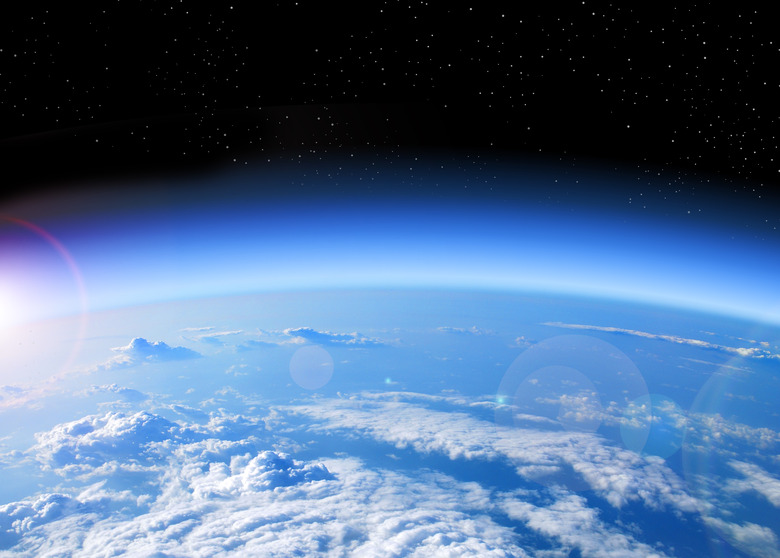What Protects The Earth From Harmful Solar Flares?
Ninety-three million miles away, our sun, a roiling sphere of gas and charged particles, can wreak havoc on our modern world. It happened in 1989, when a burst of high-energy particles caused blackouts throughout the east coast of Canada and the United States. Known as solar flares, these bursts are one of the solar system's high-energy events. Although solar flares can disrupt space objects such as satellites, Earth's magnetosphere and ionosphere protect life on our planet's surface.
Concerns
Concerns
Over its history, countless solar flares have blasted the earth. Luckily, the magnetosphere and ionosphere provide a double layer of protection. Although the earth and its inhabitants are safe from solar flares, the objects we send into space such as space shuttles and probes do not have these layers of protection. Violent solar flares called coronal mass ejections can cause geomagnetic storms on Earth. These storms disrupt communication and navigation satellites, interfere with electrical grids and can even affect high-flying planes. With much of our lives dependent on electronic communication, CMEs are a concern, even if they aren't a direct threat to life.
Sunspots and Solar Flares
Sunspots and Solar Flares
Astronomers have observed sunspots for more than 2,000 years. During a solar flare, the magnetic field of the sun concentrates around a sunspot, blocking the normal flow of solar energy. When that energy is released, a burst of radiation flares from the sun. This flare is packed with charged particles such as electrons and protons, which with the radiation, hurtle into space. Because the sunspots and solar flares are related, both types of event follow an 11-year cycle of activity.
Magnetic Protection
Magnetic Protection
Earth's magnetosphere, the first layer of protection against solar flares, whisks away the flare's charged particles. Due to the effects of the solar wind, the magnetosphere has a compressed, bulbous side that faces the sun, a dip near Earth's poles and a flowing tail extending away from the sun. Earth's magnetic field blocks these charged particles from most of our planet's surface, while the solar wind pushes them along to the tail of the magnetosphere. In the dips of the magnetic field at the poles, this particle-sweeping action appears as the auroras.
Atmospheric Protection
Atmospheric Protection
While the magnetosphere blocks charged particles, the ionosphere, a high-level layer of Earth's atmosphere, stops the radiation from solar flares. Every day, charged gas particles within the 153-mile-deep ionosphere absorb radiation and prevent it from reaching Earth's surface. Although intense, with this protection the energy of a solar flare cannot irradiate our planet and potentially damage Earth's plants and animals.
Cite This Article
MLA
Painter, Tammie. "What Protects The Earth From Harmful Solar Flares?" sciencing.com, https://www.sciencing.com/protects-earth-harmful-solar-flares-2515/. 9 March 2018.
APA
Painter, Tammie. (2018, March 9). What Protects The Earth From Harmful Solar Flares?. sciencing.com. Retrieved from https://www.sciencing.com/protects-earth-harmful-solar-flares-2515/
Chicago
Painter, Tammie. What Protects The Earth From Harmful Solar Flares? last modified March 24, 2022. https://www.sciencing.com/protects-earth-harmful-solar-flares-2515/
